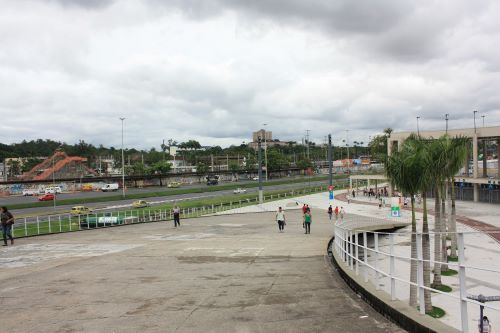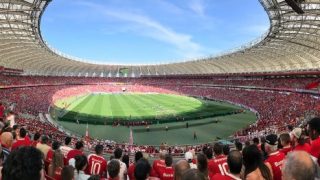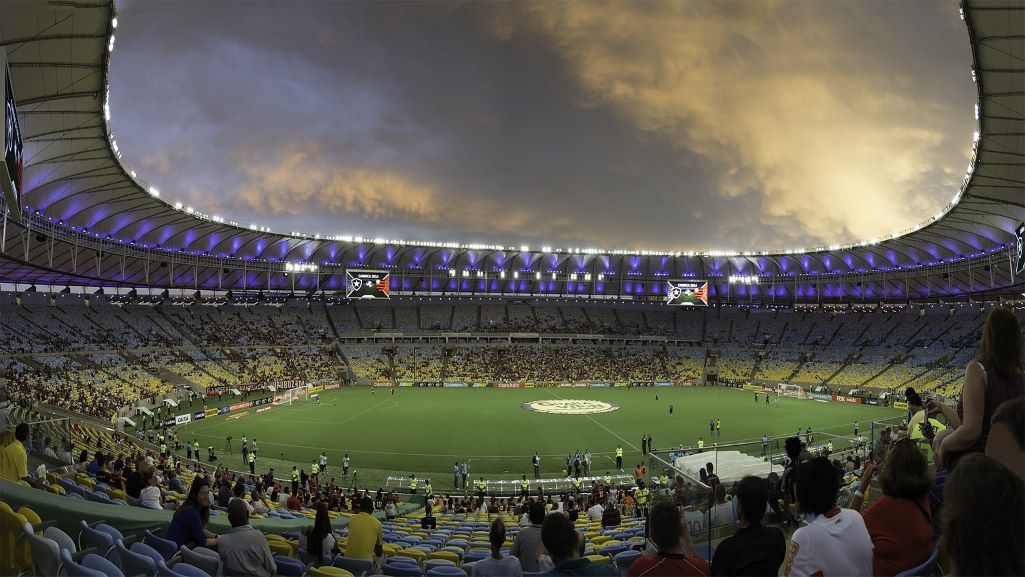The 2014 World Cup football tournament, hosted by Brazil, was one of the most visited in history: Around 3.5 million spectators attended the 64 matches in 12 venues across the country. Six of those stadiums were newly built, while the rest were renovated, adapting them to the required safety and comfort conditions. Crowd simulations played an important role in this success.
When Brazil was chosen to host World Cup 2014, most of the existing stadiums were old, built in a time where safety standards were lower. In most of the bigger stadiums, visitors would need more than 40 minutes to reach an exit from their seats. This, of course, can be a real risk during emergencies.
The most famous and iconic Brazilian stadium is Maracana, in Rio de Janeiro. Built for the 1950 World Cup tournament, it had an original capacity of about 200,000 spectators.
Higher safety standards

Today, international standards require that major public events have reliable safety and mobility concepts. For example, reaching an exit should take no more than 8 minutes, and even less in closed venues.
To guarantee this, and to evaluate the solutions suggested to the stadiums’ design, our consultancy Logit was commissioned to run a crowd simulation. To evaluate proposed safety measures and solutions, it was necessary to innovate – so we used a microsimulation software.
In 2012, when we were commissioned, simulating 80,000 pedestrians simultaneously was very time consuming. But together with the PTV development team, we worked to get around the limitations of the period.
We also tested and calibrated user behavior algorithms for extreme situations, creating a great knowledge base along the way.
For example, the pedestrian simulations by PTV Viswalk software showed, that four new exit ramps in Maracana . The widening would enable those ramps to properly withstand the expected flow of people.
Furthermore, we learned from Viswalk simulations that the in the upper stands of the stadium had to be segregated from the others. This, in order to distribute them in an appropriate proportion to the upper and intermediate exits.
Detailed crowd simulations
Detailed crowd simulations were also carried for the new stadiums, built ahead of the 2014 tournament.
At the Arena das Dunas stadium in the city of Natal, pedestrian simulations by PTV Viswalk led planners to reduce the width of planned staircases by 30%. This, in turn, reduced the building costs. This stadium was also built for shows and events, and we simulated events in which the audience occupies the entire lawn.
During the revitalization of Beira Rio stadium in Porto Alegre, the crowd simulations led us to recommend that two additional staircases be built, other than those already planned.
In Fonte Nova Arena in Salvador, our solutions focused on repositioning the temporary services equipment, so it would not obstruct crowd.

Modeling and improving
A few months before the start of the games, our consultancy was hired again. This time we were asked to check the safety of temporary stands installed at Arena Itaquera stadium in Sao Paulo.
Armed with PTV Viswalk, and the experience from modelling and simulating the other stadiums, we were able to complete the modeling in a very short time, compared to the first project.
We found that the time required for evacuating Itaquera was 8.5 minutes, which is longer than the duration allowed. The solution we came up with was not infrastructure-related, but operational: The local fire department adjusted its plans for emergency scenarios.
Our methodology, and the microsimulation technique used with PTV Viswalk, was later required during the planning of the 2016 Summer Olympic Games in Rio de Janeiro. We evaluated all the around the Olympic Park, helping the design of the temporary structures.
How PTV Viswalk crowd simulations work
PTV Viswalk is a microscopic simulation solution for pedestrian settings. It is used to plan normal and emergency operations in public transport stations, urban road space, airports, event venues, and office buildings.
Since the project in Brazil was successfully completed, PTV Viswalk has been upgraded: It can now simulate movements of 80,000 pedestrians in near real-time conditions.
Its functionality was stretched since in different dimensions: The modeling is faster and more comprehensible; scripting and programming elements offer more flexibility to implement context specific behavior; and the interface with PTV Vissim software now allows to simulate shared spaces of pedestrians and vehicles.



